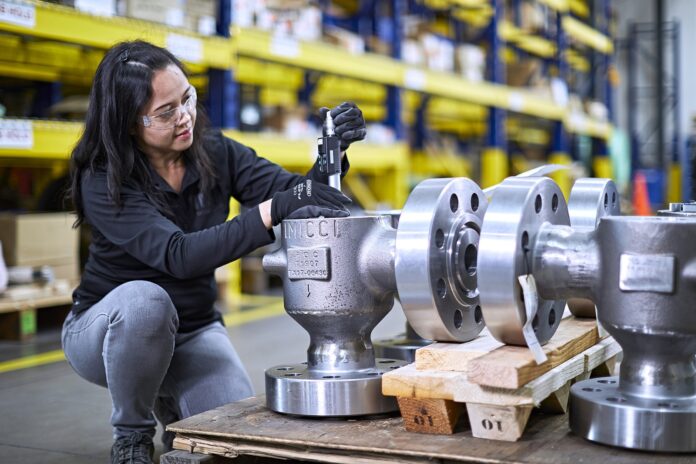Sometimes it can be easy to overlook the impact of certain product designs, especially if they go on to become an industry standard. Novel ideas – the kind that actually reshape the way businesses operate – also tend to fade in people’s imagination if they first hit the market decades earlier.
DRAG® technology was developed in 1967 by Dick Self, an aerospace engineer who was trying to solve the problem of how to control high pressure drops in control valves. His pioneering work has since gone on to define the principles for velocity and fluid kinetic energy control across many different sectors. It’s difficult to overstate its importance for industry today because many plants now adopt multi-stage control valve designs without second thought.
Yet for all its breakthrough properties, DRAG® technology remains an under-examined part of IMI Critical Engineering’s history. This blog looks at its impact and explains why – despite being on the market almost 60 years – it remains such a good example of the company’s innovative approach to complex engineering challenges.
Moving Industry Forward
The value of DRAG® technology is best seen through its history and quick adoption across different sectors. Early on, one of the primary drivers was occupational safety, with organisations keen to manage system noise following protection measures introduced by organisations like the OHSA in the 1970s. During this time, CCI conducted test programs with Dupont, Pacific Gas & Electric, and Southern California Edison. These test programs verified the performance and benefits of DRAG® technology. Babcock and Wilcox then acquired CCI in 1971, accelerating the technology’s development and implementation over the following years.
By the 1980s, DRAG® was widely used in utility power plants across the world. In the 1990s, CCI began working with customers in nuclear plants, addressing issues in main feedwater control valves, as well as steam dump to condenser and steam dump to atmosphere applications. CCI successfully retrofit competitors’ feedwater control valves and eliminated problems with vibration.
The 1990s also saw the company pursue new applications in choke valves used for upstream oil and gas work, LNG compressor recycle valves and combined cycle turbine bypass valves. This period was so successful that CCI began a period of co-development with Statoil (now Equinor), setting the foundations for a period of rapid growth over the next few decades. Today, there are DRAG® valves installed in LNG plant and combined cycle plants across the world.
Simple but Significant
Like many of the best feats of engineering, DRAG® technology is a relatively simple solution. It’s based on a multi-stage pressure drop, which divides a pipe’s flow into different streams, similar to cages. Most cages are limited to between one and three stages but DRAG® can provide more than 20 stages of pressure letdown. The number is based on the customer’s operating conditions and velocity control limits.
DRAG® technology’s longevity can also be explained by the three major problems it addresses:
- Cavitation – Liquids accelerate when they pass through the reduced area of a valve’s control element. This can lead to pitting damage, poor control and excessive noise.
- Erosion – Washing action or abrasion from entrained particles can lead to gradual wear. Most severe at high pressures, making velocity control especially important.
- Noise and Vibration – High fluid velocities can cause uncontrolled noise and pipe motion. This not only leads to potential system shutdowns but also health hazards for plant operators.
Time has proven DRAG® to be a powerful ally for addressing these problems, which cause valve repair, loss of process control, damage to piping components and unplanned downtime. The technology also has been shown to improve the overall reliability and efficiency of customers’ plants, saving untold amounts of product, time and money.
Despite being a mainstay of IMI’s 100D range, the business continues to drive the technology forward. Retrofit3D, for example, now allows a business to incorporate DRAG® technology into an existing valve installation much quicker than before, avoiding the hassle and expense associated with a total refit. This new service also gives IMI new options for valve design, allowing engineers to develop more compact disk stacks that do not require precise compression inside the valve. While this kind of improvement may appear minor on first inspection, it follows the same thinking that made DRAG® so effective when first introduced in the late 1960s.
For more information, please visit: https://www.imi-critical.com/the-innovative-thinking-behind-drag-technology/
Tel: 0121 7173700
Email: imihq@imi.critical.com
Website: www.imi-critical.com



